Canon D30 - Retro Review
Canon's first true DSLR was launched in November of 2000. Like Nikon, Canon had previously collaborated with Kodak to make digital franken-cameras, based on existing film SLR bodies (D2000 & D6000). Canon finally decided to jump on the purpose built DSLR bandwagon a full year after Nikon started the whole thing, but Canon had a few tricks up their sleeve.
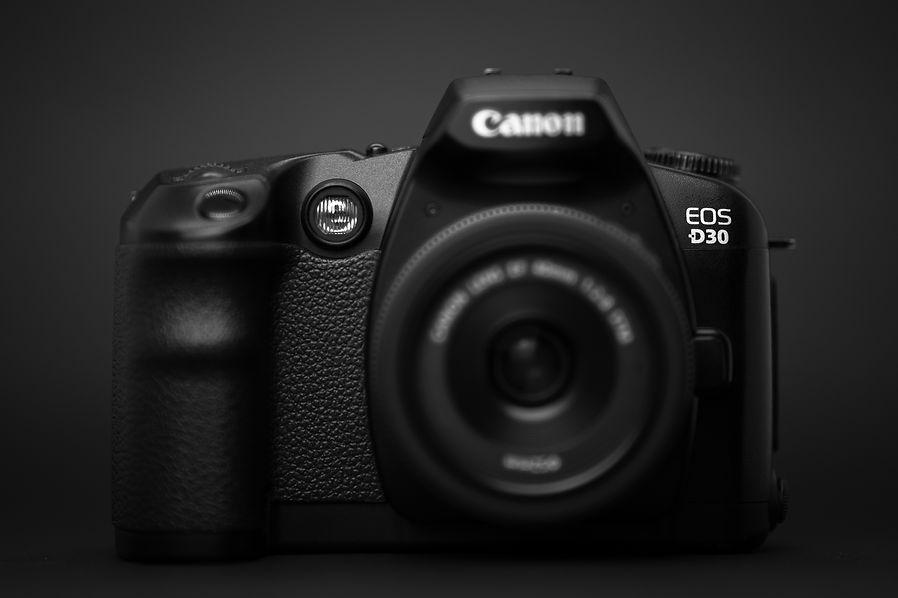
Canon D30 + 40mm f/2.8
Specifications
Date:
$ (inflation):
Sensor:
Resolution:
Burst:
DR Stops:
P-Shutter
Shutter:
AF Points:
Video:
ISO:
OVF:
LCD:
Memory:
Data Cable:
Weight:
Battery:
2000 (May)
$3000 ($5,600)
APS-C (1.6x) CMOS
3.1 mp
3 fps / 3 frames
6.5 (12bit)
1/200th
30 sec - 1/4,000th
3
No
200 - 1600
0.88x / 95%
1.8" / 114k
CF I (up to 2GB)
24-pin USB (weird)
750g (1.65lbs)
~300 (BP-511)
To differentiate themselves from their major rival and perhaps to play it safe, Canon decided to follow Fuji's lead and design a smaller and cheaper (more plasticy) model for consumers with deep pockets. Both the Fuji S1 Pro and the D30 were small-ish digital SLRs priced at $3000 using their own 3 megapixel sensors, but there the similarities end. While the Fuji's offering was a JPG only shooting, modified Nikon F60, Canon went all-in on a purpose built digital body that shot RAW images from the world's first high quality, high megapixel CMOS sensor - justifying its price a little more easily... but how does it feel 21 years on?...
Design
Having dipped my toes into the Canon craze for a couple of years (with the 40D & 5D), I didn't really get on with the controls, ergonomics or image quality, so if you're Canon enthusiast take my opinions here with a pinch of salt...
I find the design of the D30 largely similar to pretty much every other non-professional Canon DSLR I've ever picked up. I felt that same design philosophy being established from the beginning, perhaps even more so than was in the Nikon D1. Looking at the back of the camera, the age is given away mostly by how small the rear LCD screen is. I like that the Canon menu system is also very well established here. Understandably sparse, but fat better than Nikon's awkwardly cryptic menu in the D1 (from the F5). From the front it's only really the name that stands out, since Canon nailed down putting the 'D' moniker after the number later on.
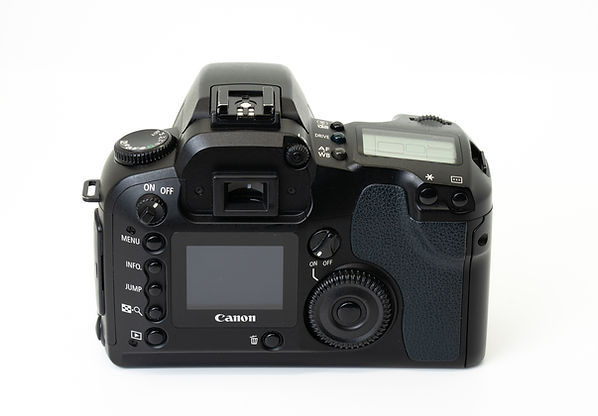
The D30 is a much easier beast for consumers to jump into. The information that you get on the top LCD is also pretty well established here and makes sense even if you aren't too used to the Canon System. I have never gotten on with the Canon dials and thumb grip, but a lot of people did and that has barely changed in two decades.
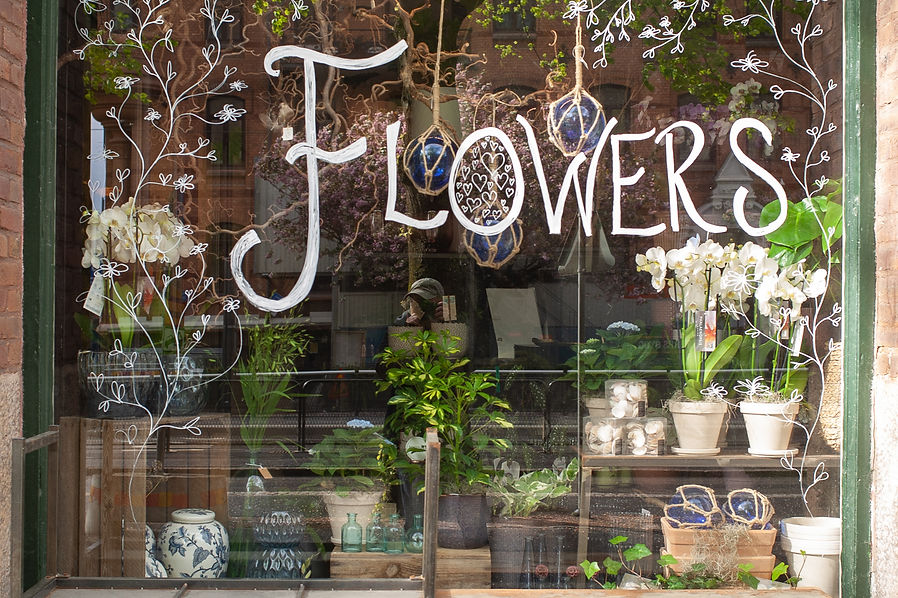
Image Quality
Just three megapixels in 2021 can seem like a joke, but in the context of the time this wasn't bad at all. Comparing this to the Fuji S1 Pro (the other 3mp $3000 DSLR of the time) the fact that the Canon can shoot RAW is a huge bonus. Although back in 2000 more people would have preferred JPG because it was a lot easier. Processing RAWs wasn't as easy back then and these files didn't have the exposure latitude that modern image sensors have, so the difference in quality wasn't always hugely noticeable. Professionals especially liked JPG because they could send them directly to a publisher rather than having to edit them, so perhaps Professional Canon DSLR users would have liked this as a backup body.
I probably don't need to say it, but the colours are sublime here. I once thought this was due to CCD sensors, but this old CMOS clearly proves that old colour science was just far more punchy Given how my other early DSLRs work in Adobe Camera Raw today, it seems that the colours might have been even prettier if they were processed with older profiles too.
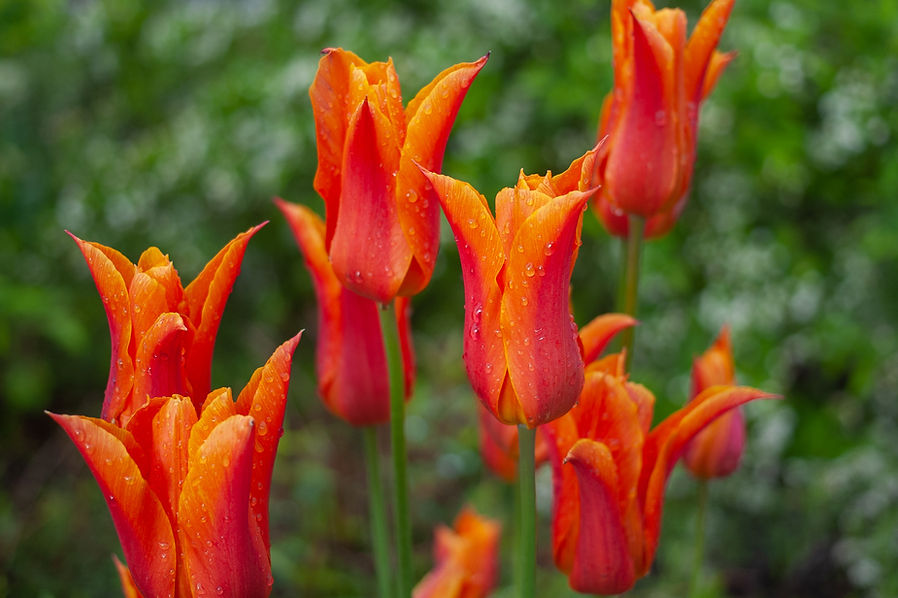
I think the most shocking thing to me reading up about the D30 was that Canon established the CMOS sensor in their very first DSLR. If I was to guess it would have been a few more years before that happened. CMOS is now the industry standard, but back then it was solidly CCD for pretty much every other camera and several manufacturers didn't switch over to CMOS for another decade. Since this was such a pioneering technology at the time, I am kind of blown away that it performs so well here. Of course the dynamic range will stand out to many people, but the colours are pretty good, and I haven't calibrated the camera profiles like I had to do with the Kodak DSLR from 2001.
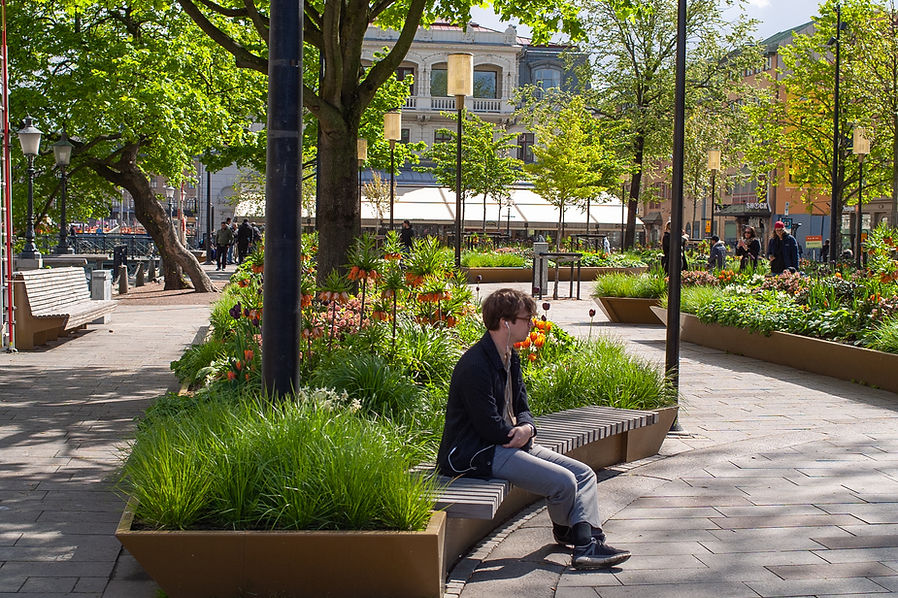
The Canon D30 RAW files easily open in most software today. I had no issues with them in any of my viewers or editors.
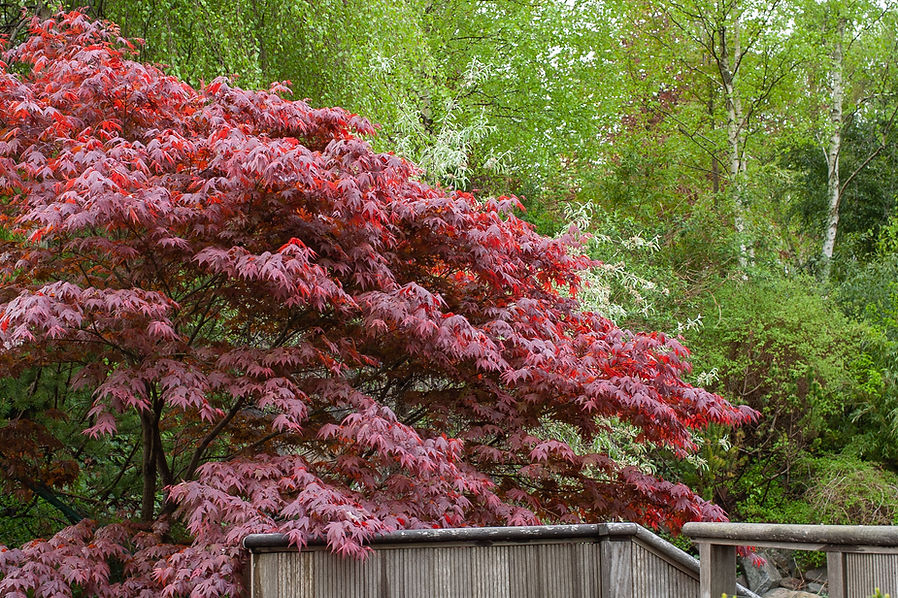
Lenses
The D30 used a 1.6x crop sensor, so using those lenses came with quite a large field-of-view penalty, and it would be another three years before Canon would start selling cropped EF-S lenses. This awkwardness made clear to me as the only lens I owned in EF mount was a 40mm f/2.8 pancake lens. This became a 64mm f/4.48 equivalent on this camera. You might be able to see how restrictive this was from the sample images.
Although I only have one other EF mount lens, it is a Sigma Art 135mm f/1.8, which becomes a very specialist 216mm f/2.88, so I haven't had a chance to use that yet. I can however use my copious Nikon F mount lenses on the Canon D30 with an adapter that I used to use on my 5D back in the day. This will open up a bunch of framing options, but limited to manual focus.
Since initially writing this review I have picked up a few more EF lenses, still no EF-S ones unfortunately though. The image below was taken on the Canon EF 85mm f/1.2 L II lens, which produces a ton of background blur. It's more quantity than quality IMO, but that's often good enough for this kind of shot.

Memory / Speed
The D30 can take CF memory cards up to 2GB. This allows for around 590 RAWs, or 1850 JPGs. Interestingly it will allow a 4GB card to be formatted as 2GB, giving about 5% extra space. I tried several 8GB cards, but all gave an error after being formatted.
The burst speed of the D30 is a decent 3 frames per second, however this only lasts for 3 RAW files, making it not particularly useful. Since my only fast Canon EF mount lens is a 135mm f/1.8 (Sigma ART) I couldn't really try any bokeh panos with this woeful buffer. Not that it would have been easy to use a 216mm angle of view anyway!
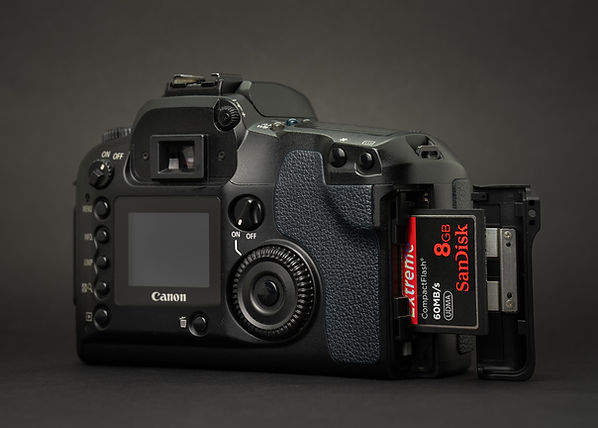
Battery / Charger
Like most old DSLRs it's pretty easy to buy 3rd party batteries for the D30 these days. The BP-511A battery was used in a lot of Canon cameras, EOS models up to the 5D and Powershots up to the G6, so I imagine this battery will be available for quite a long time to come.
The charger is a very simple device and also easily available if you need to buy another one.
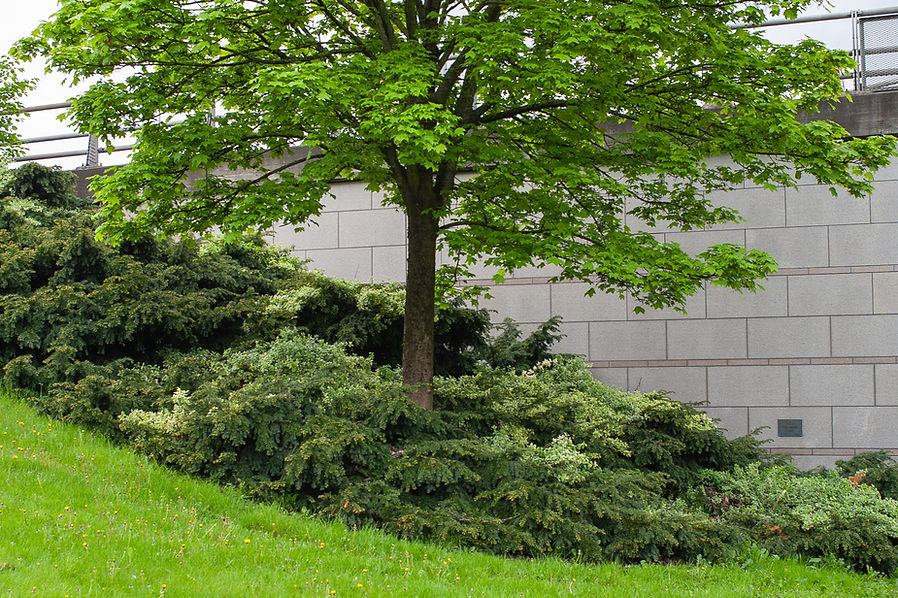
Conclusion
I didn't know much about the D30 before I started looking into early DSLRs. Some of this is because I'm not too familiar or keen on Canon DSLRs in general, but I have to say that I'm far more impressed by this early machine than I thought I would be. As a piece of history it's extremely interesting what Canon were trying to do here. It's also a very friendly and easy to pick up camera twenty one years on. The fact that I don't have any EF-S lenses is probably holding me back from liking this camera more that I already do.
I will keep my eyes open for a Canon 1D, so hopefully I can find one in good condition for not crazy money. Although this took more than another year to come out, it was another very interesting piece of digital camera history.
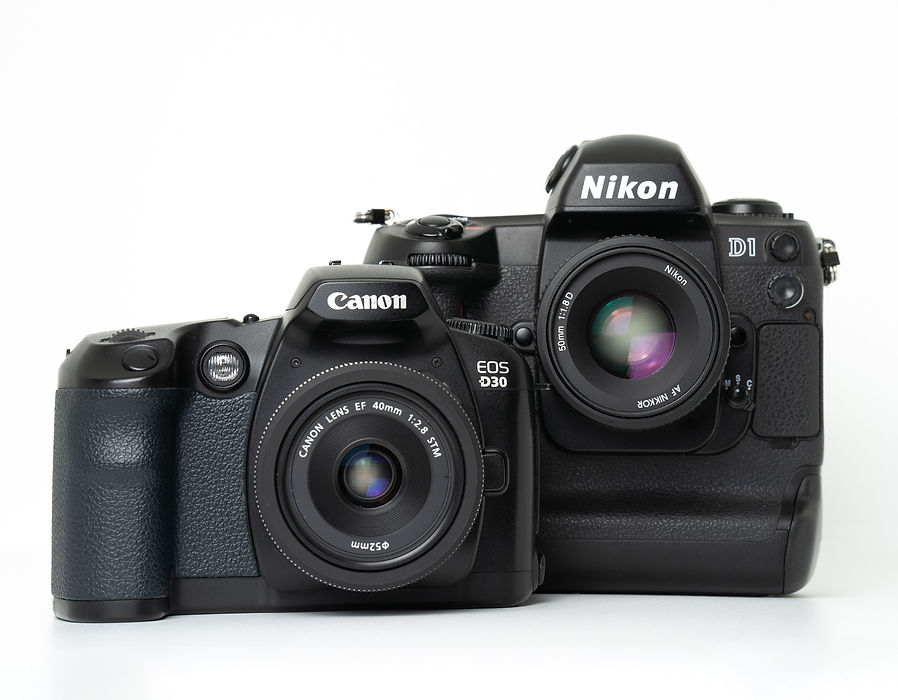
The first purpose built DSLRs from the two big SLR manufacturers of the time. My digital SLR camera museum continues to grow...